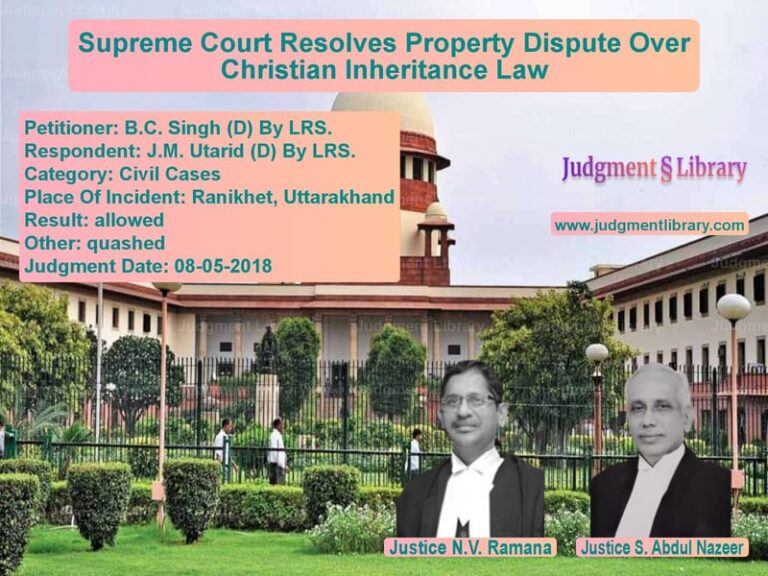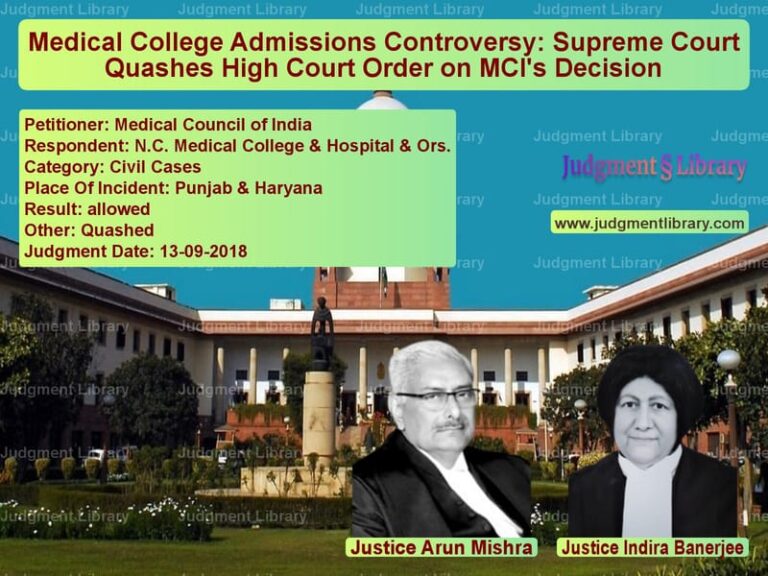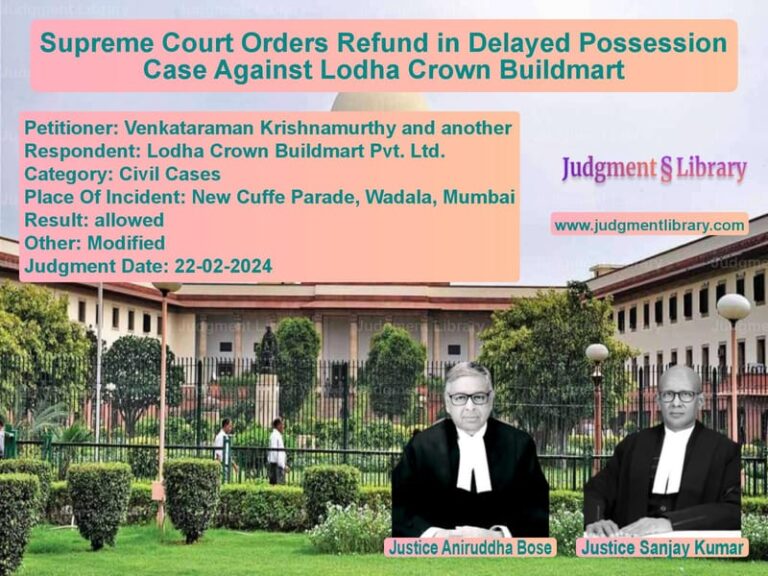Supreme Court Acquits Punjab Man in 1997 Murder Case Due to Lack of Evidence
The case of Kirpal Singh vs. State of Punjab is a significant judgment concerning criminal conviction, evidentiary flaws, and wrongful identification. The Supreme Court was tasked with determining whether the conviction of the accused was legally sustainable based on the evidence available.
Background of the Case
The incident dates back to the night of November 12-13, 1997, when Balwinder Singh, a shop owner in Punjab, was attacked and murdered. The prosecution alleged that Kirpal Singh and an unidentified accomplice broke into Balwinder Singh’s home, attacked him with a spade, and injured his wife, Sharan Kaur. The attack allegedly stemmed from professional rivalry, as both the accused and the deceased operated halwai (sweet) shops.
The case was registered under Sections 302 and 307 of the Indian Penal Code (IPC), and Kirpal Singh was arrested. The trial court convicted him and sentenced him to life imprisonment, a decision later upheld by the Punjab and Haryana High Court in 2008. Kirpal Singh then appealed to the Supreme Court, arguing that his conviction was based on unreliable evidence and improper legal procedures.
Prosecution’s Case and Key Evidence
- The crime occurred at night when the deceased was sleeping in a chaubara (an open attic-style room).
- According to Sharan Kaur (PW-5), she heard noises, opened the door, and saw Kirpal Singh standing with a weapon.
- She identified Kirpal Singh as the man who stabbed her and later saw her husband severely injured.
- The prosecution argued that the accused had a strong motive—jealousy over the victim’s successful halwai business.
- A ladder was allegedly used by the accused to enter the victim’s house.
- The police recovered a spade, which was believed to be the murder weapon.
- The prosecution relied on witness testimonies, particularly those of Sharan Kaur and her son, Daljit Singh (PW-6).
Arguments by the Petitioner (Kirpal Singh)
- The identification of the accused was unreliable as the crime occurred at night, and the witnesses did not initially name him.
- The motive was weak, as no independent evidence proved business rivalry.
- The prosecution relied heavily on circumstantial evidence without concrete proof linking the accused to the crime.
- The first informant, Sharan Kaur, made contradictory statements and filed multiple petitions alleging police bias.
- The prosecution did not recover the murder weapon from the accused.
Arguments by the Respondents (State of Punjab)
- Sharan Kaur was an injured eyewitness, and her testimony should be given high evidentiary value.
- The accused was named in court, and the witnesses provided a detailed description of his involvement.
- Minor contradictions in witness statements should not affect the overall case.
- The presence of a ladder and the recovery of a spade from the crime scene supported the prosecution’s theory.
Supreme Court’s Analysis and Judgment
The Supreme Court identified multiple weaknesses in the prosecution’s case:
- Unreliable Witness Testimony: The Court found inconsistencies in witness statements, particularly that of Sharan Kaur, who initially did not name the accused in her FIR but later identified him in court.
- Flawed Identification Process: The accused was identified in court after a significant delay without prior identification in a Test Identification Parade.
- Weak Motive: The alleged business rivalry was not corroborated by any independent evidence.
- Failure to Establish Direct Evidence: The prosecution could not produce conclusive evidence linking Kirpal Singh to the crime.
Based on these findings, the Supreme Court concluded:
“The prosecution’s story of motive is very weak and rather far-fetched. The case is full of holes that cannot be stitched together.”
Supreme Court’s Final Order
- The conviction and sentence imposed by the trial court and upheld by the High Court were set aside.
- The accused, Kirpal Singh, was acquitted of all charges.
- He was ordered to be released from custody immediately unless required in any other case.
Legal Implications of the Judgment
This ruling highlights the importance of:
- Proper identification procedures in criminal cases.
- The need for independent corroboration of circumstantial evidence.
- Ensuring that convictions are based on solid legal and factual grounds.
Conclusion
The Supreme Court’s decision underscores the necessity of credible identification and independent corroboration in criminal cases. The judgment reinforces that convictions cannot be based on mere suspicion and circumstantial evidence without strong proof. This ruling serves as a precedent for ensuring that procedural lapses do not lead to wrongful convictions.
Petitioner Name: Kirpal Singh.Respondent Name: State of Punjab.Judgment By: Justice B.R. Gavai, Justice Sandeep Mehta.Place Of Incident: Hoshiarpur, Punjab.Judgment Date: 18-04-2024.
Don’t miss out on the full details! Download the complete judgment in PDF format below and gain valuable insights instantly!
Download Judgment: kirpal-singh-vs-state-of-punjab-supreme-court-of-india-judgment-dated-18-04-2024.pdf
Directly Download Judgment: Directly download this Judgment
See all petitions in Murder Cases
See all petitions in Bail and Anticipatory Bail
See all petitions in Legal Malpractice
See all petitions in Judgment by B R Gavai
See all petitions in Judgment by Sandeep Mehta
See all petitions in allowed
See all petitions in Quashed
See all petitions in supreme court of India judgments April 2024
See all petitions in 2024 judgments
See all posts in Criminal Cases Category
See all allowed petitions in Criminal Cases Category
See all Dismissed petitions in Criminal Cases Category
See all partially allowed petitions in Criminal Cases Category







